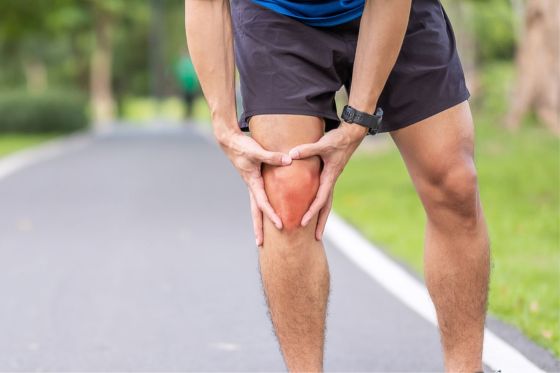For runners, the repetitive motion and impact of feet hitting the pavement can often lead to a common and frustrating ailment: hip and knee pain.
It’s a plight that can sideline even the most dedicated runners, disrupting training and racing plans.
But what if the pain you’re experiencing is not just a byproduct of your running but aggravated by common mistakes you might be overlooking?
The Missteps Behind the Pain
1. Ignoring Early Signs of Discomfort
Often, runners push through the initial discomfort, dismissing it as a temporary ache.
However, this early sign is your body’s way of waving a red flag.
Addressing hip and knee pain at the onset can prevent a niggle from becoming a chronic issue.
2. Overlooking Footwear’s Impact
It’s not just about the treads on your shoes; it’s about the support and fit.
Inadequate footwear can lead to improper gait, which in turn can exacerbate hip and knee pain.
Ensure your running shoes are not only suited to your foot type but also regularly replaced to provide the best support.
3. Ramping Up Too Quickly
Increasing mileage or intensity too quickly is a common pitfall.
The ‘too much, too soon’ approach can shock your body, particularly your hips and knees, leading to pain.
The key? Gradual progression and listening to your body’s feedback.
4. Neglecting Strength and Flexibility Training
Running is more than just cardio; it’s a full-body workout that requires strength and flexibility.
Neglecting these aspects can lead to imbalances and weakness, contributing to hip and knee pain.
Incorporating a balanced training regimen can support your joints and muscles, mitigating pain.
5. Skipping Rest Days
Rest is not for the weak; it’s for the wise.
Skipping rest days can rob your hips and knees of the chance to recover, leading to compounded stress and pain.
Prioritize recovery as much as your runs to maintain joint health.
Integrating Solutions for Hip and Knee Pain
Understanding Your Body’s Mechanics
Every runner’s stride is unique, and understanding your biomechanics can be pivotal in addressing hip and knee pain.
Small tweaks in your running form can make significant differences in how your body handles the stress of running.
Embracing Cross-Training
Cross-training can enhance your running performance while reducing the risk of hip and knee pain.
Activities like swimming or cycling can maintain your cardio fitness without overloading your joints.
Prioritizing Post-Run Recovery
Post-run care, including stretching and foam rolling, can help alleviate tightness and discomfort in the hips and knees.
This recovery process can prevent pain from taking root.
Our February Offer: A Painless Path Forward
As we address these common mistakes, let’s also talk about a path forward.
Say goodbye to knee pain and hello to more miles this February with our exclusive Shockwave Taster Session for JUST $47!
Valued at $542, our offer is tailored for runners eager to conquer knee pain and hit their stride in fitness.
With limited spots available, don’t miss this chance to experience the healing power of shockwave therapy, designed for faster recovery, pain reduction, and tissue regeneration.
Call P3 Athletic at 408-495-3743 TODAY and secure your Shockwave Taster Session.
Let’s put hip and knee pain behind you and get you back to running pain-free and stronger than ever – your best run is waiting!
Other Free Resources For Hip And Knee Pain
Read Our Blog – Is Pickleball Hard On Knees?: 5 Tips To Building Knee Stability
Read Our Blog – 5 Best Exercises To Prevent An ACL Injury That You Can Do While Watching TV
Read Our Blog – 5 Reasons You Should Be Concerned About ACL Injuries And Surgery

